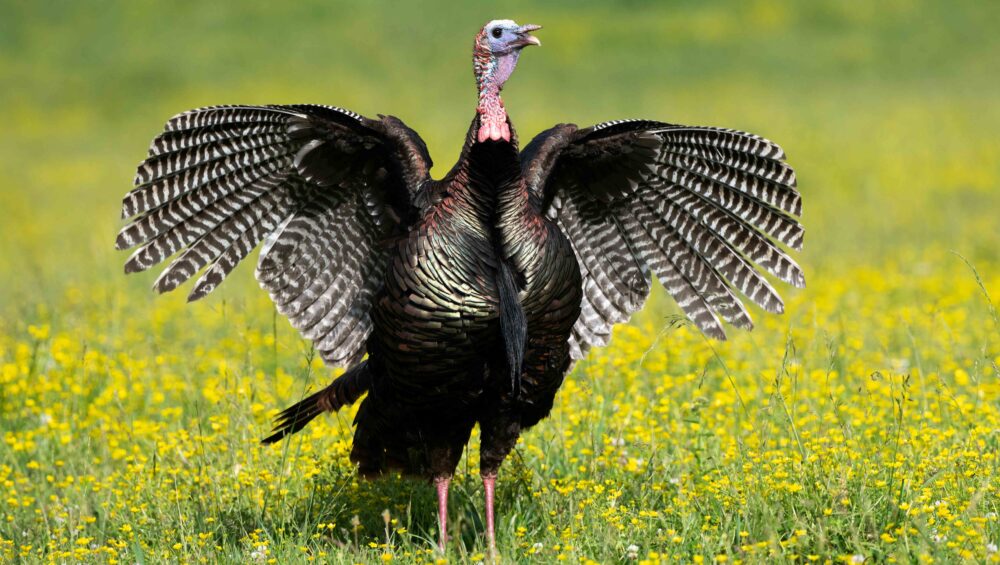Whether you are a photographer or birder knowing the habits of your target will greatly enhance your chance of seeing and photographing it. American Wild Turkey is a fascinating subject to photograph and observe. What might appear to be a very dull brown bird in one light, can be a beautiful iridescent bronze in another. Additionally, even among the rather plain hens you may encounter a genetic variation called a “smoke phase” or white hen. So, join us in an exploration of the American Wild Turkey.
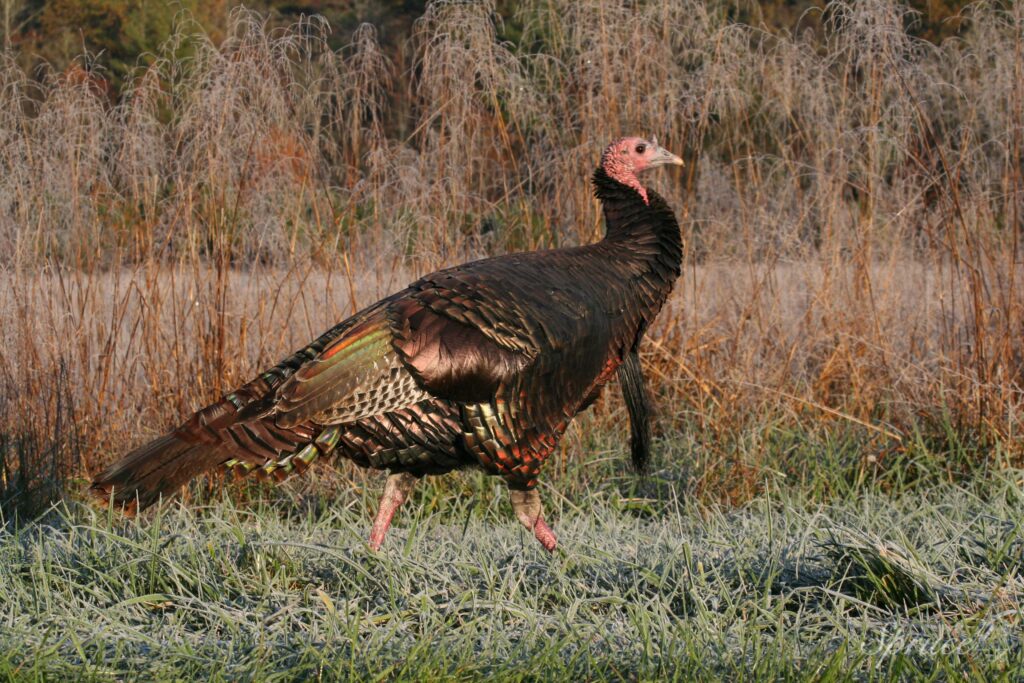
Curious Name
The American Wild Turkey (Meleagris gallopavo) is one of North America’s most iconic native birds. Despite the name, Wild Turkey have no direct connection with the country of Turkey. Apparently when European settlers first encountered these birds in the Americas, they mistakenly believed they were related to guinea fowl. Guinea fowl were imported to Europe through Turkish merchants. This association led to the name “Turkey bird”, which eventually shortened to simply “turkey”. Turkey parlance includes the additional designations of Tom for a mature male, Jake for a younger male, Hen for a female, and Poult for a young turkey. With naming conventions out of the way, let’s jump into where Turkeys live, their reproductive cycle, and behaviors.
Geographic Range and Habitat
Wild Turkeys are native exclusively to North America with an extensive habitat range. They are found throughout most of the continental United States, parts of southern Canada, and portions of northern Mexico. Turkeys require diverse habitats that provide mature trees for roosting, open understory areas for breeding displays, grassy or shrubby areas for nesting, and food sources such as nuts, seeds, berries, insects, and small vertebrates. In the Great Smoky Mountains, Wild Turkeys favor mixed hardwood forests with oak and hickory trees, interspersed with open areas for foraging and breeding activities.
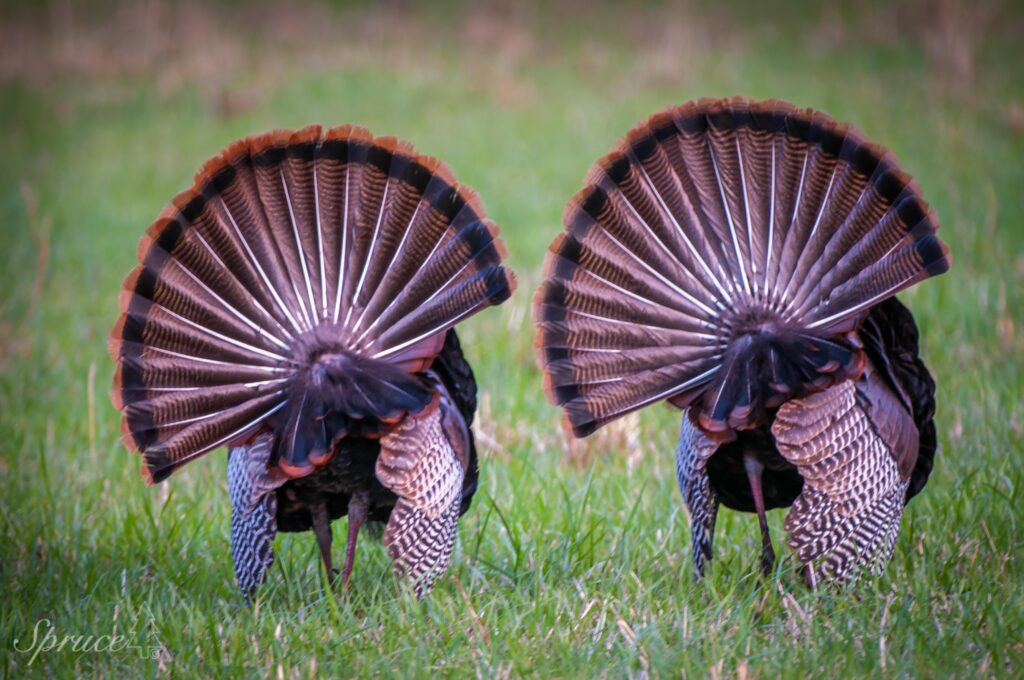
Nesting and Reproduction
Hens typically begin nesting in late April to early May, selecting a shallow depression on the ground, often at the base of a tree or under brush for concealment. The nest is typically lined with dead leaves and small twigs.
The average clutch size for Eastern Wild Turkeys ranges from 10 – 15 eggs. The eggs are pale buff in color with reddish-brown spots and are 1.9 – 2.7 inches long and 1.6 – 1.9 inches wide. Hens are solely responsible for incubation, which lasts approximately 26-28 days. During this period, the hen will only leave the nest briefly to feed, keeping the eggs warm and protected. Once hatched, the poults are able to leave the nest within 24 hours, though they remain highly vulnerable. The hen will guide her brood to feeding areas, teaching them to forage while remaining vigilant for predators.
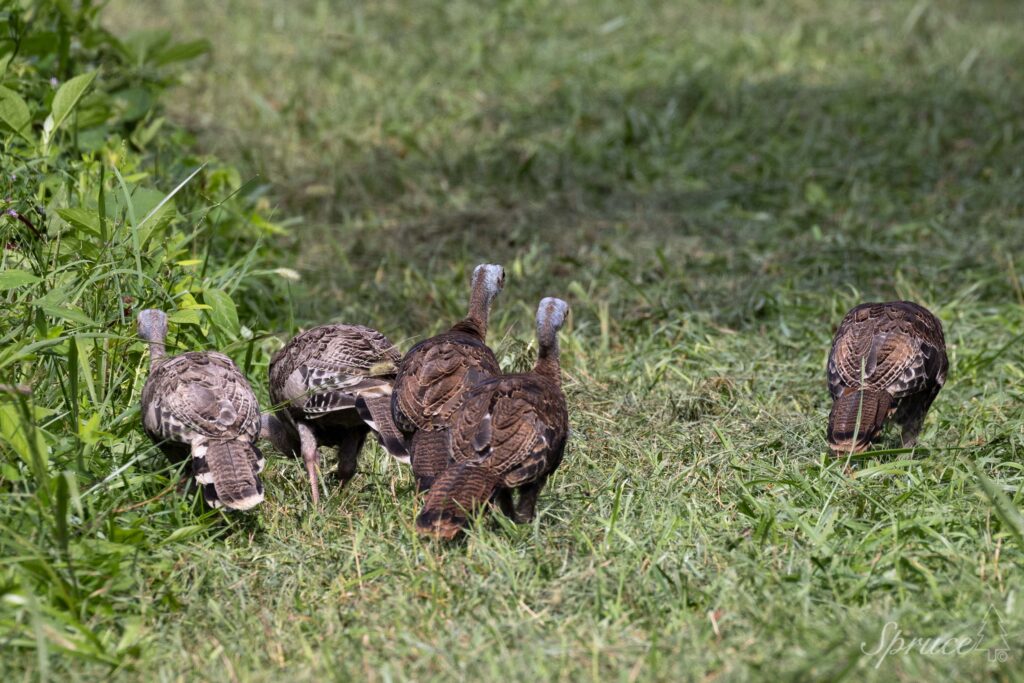
Roosting Behavior
Wild turkeys are diurnal birds that roost in trees at night for protection from predators. They typically select mature trees with horizontal branches that can support their weight. Interestingly, turkeys follow a consistent pattern when roosting. As dusk approaches, they begin moving toward their roosting sites, often gathering in small groups. They’ll fly up into the trees just before darkness falls, and in the morning, they typically fly down shortly after dawn to begin their daily foraging.
Predators and Survival Strategies
Wild turkeys face numerous predators throughout their lifecycle. Eggs and poults are particularly vulnerable to raccoons, skunks, foxes, coyotes, bobcats, and various raptors. Adult turkeys are primarily threatened by bobcats, coyotes, and great horned owls. To avoid predation, turkeys rely on their exceptional eyesight and hearing. They can detect movement at great distances and possess color vision. When threatened, turkeys will typically run rather than fly and are capable of reaching speeds up to 25 mph. However, they can fly short distances at speeds of 35-55 mph when necessary to escape danger.
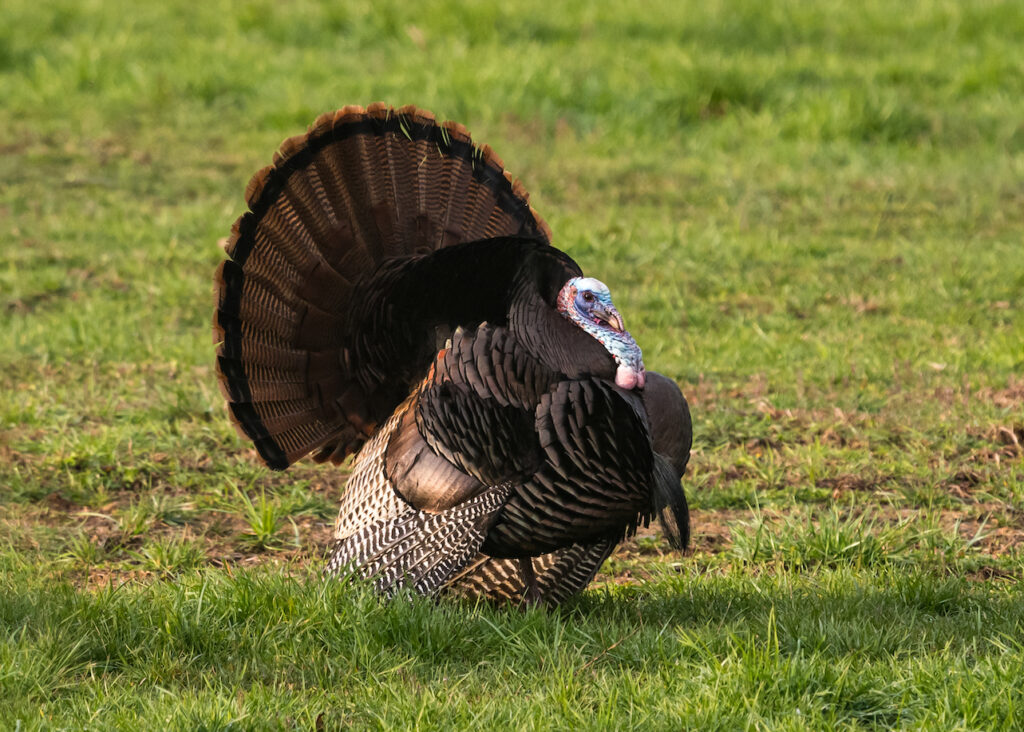
The Eastern Wild Turkey
The Eastern Wild Turkey (M. g. silvestris) is the subspecies that you will encounter throughout the eastern half of the United States including the Great Smoky Mountains. They have a rich, bronze-colored plumage with copper and green iridescent highlights. Toms typically weigh between 18-24 pounds, while hens are smaller, weighing 8-12 pounds.
Interestingly, there is a significant population of white hens in the Smokies. These “smoke phase” Wild Turkeys are not true albinos, but exhibit a genetic condition called leucism, which causes partial loss of pigmentation. Unlike albinos, which have pink eyes, leucistic turkeys typically maintain their normal eye color. The genetic trait appears to be more common in the isolated turkey populations of the Smoky Mountains than in other regions.
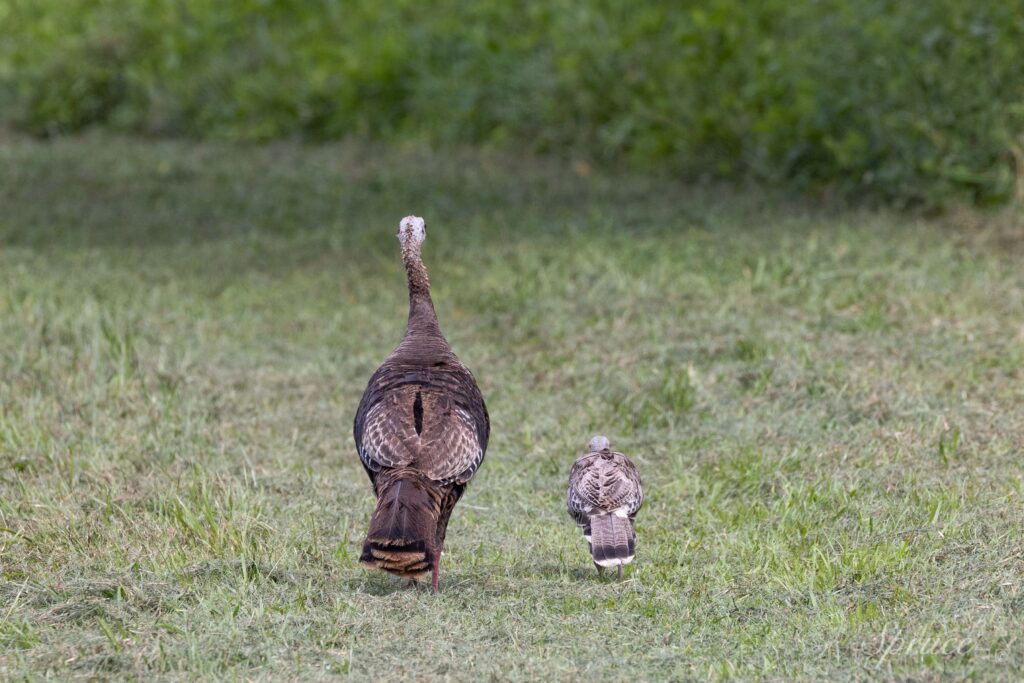
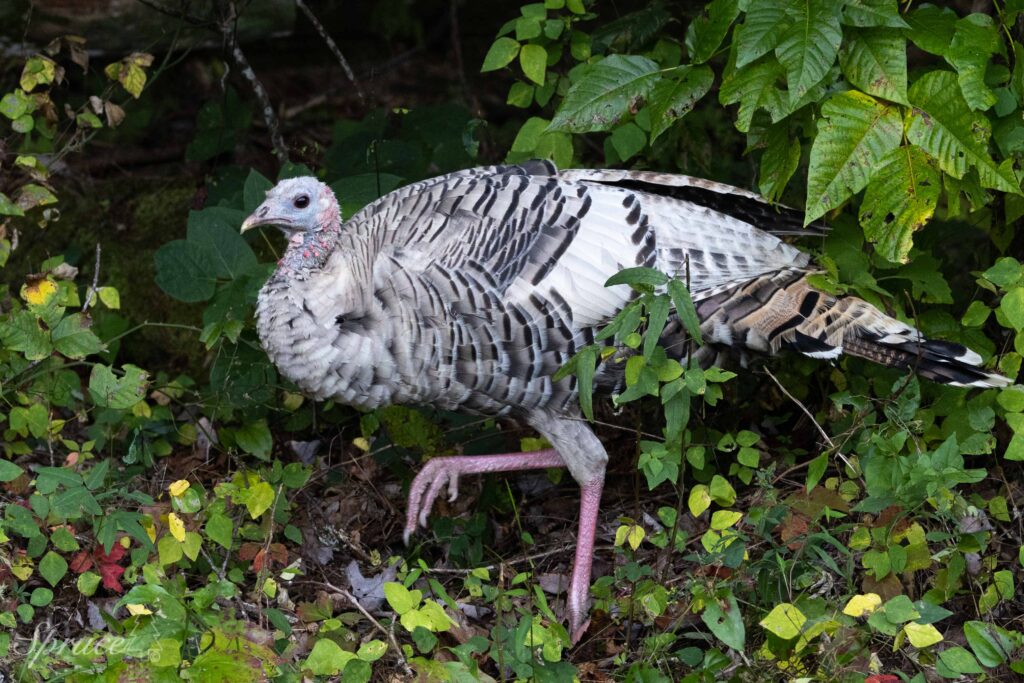
Photographing Wild Turkeys in the Smoky Mountains
For photographers wanting to capture images of Wild Turkeys strutting and displaying, the fields of Cades Cove are ideal. In the Spring males are in full breeding plumage. Focus on composing photographs that tell a story by showing the mountains in the background. Look for fields with colorful flowers to enhance the image of the bird. Early morning and late afternoon will provide the best lighting and more activity. Lighting is important to capture the iridescent plumage. Aim to be in place and ready to photograph just after dawn.
Don’t forget to take time to photograph the hens and look for the white hens. The best time to photograph hens with poults is typically late spring and early summer. The young poults will be following the hen as she leads them to various spots to feed.
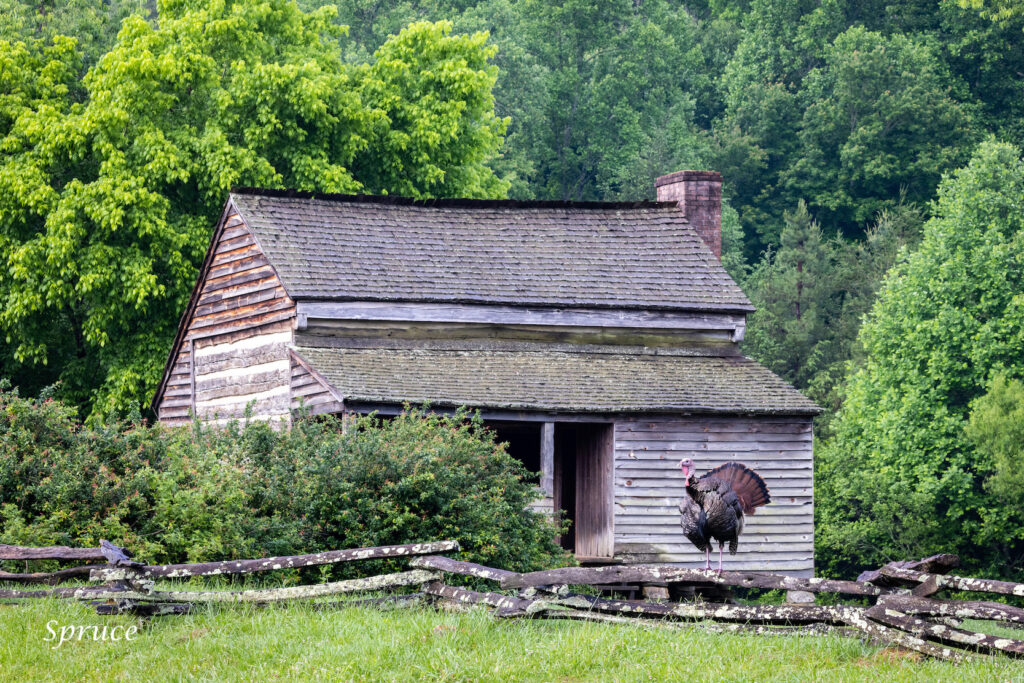
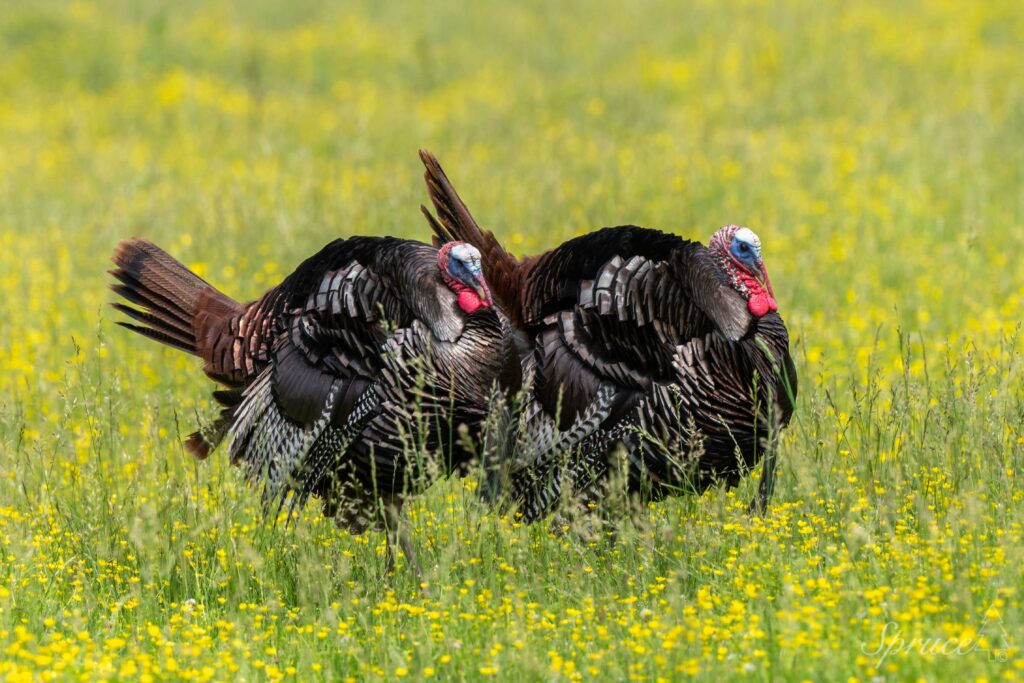
Elevate Your Photography with Spruce Photo Tours
The Great Smoky Mountains offer a premier stage for photographing birds and wildlife, and Spruce Photo Tours provides the expertise to make it happen. Our workshops offer a small group experience; while private guided tours offer one-on-one photography instruction. Whether you seek a multi-day workshop or a tailored private tour, our approach ensures personalized instruction and an unforgettable time exploring the Smoky Mountains. Reserve your spot today at SprucePhotoTours.com, and join us to explore, experience, and photograph!
References:
- National Wild Turkey Federation. (2024). “Eastern Wild Turkey.” Retrieved from https://www.nwtf.org/conservation/species/eastern
- Cornell Lab of Ornithology. (2024). “Wild Turkey.” All About Birds. Retrieved from https://www.allaboutbirds.org/guide/Wild_Turkey/
- National Park Service. (2023). “Wild Turkeys of the Great Smoky Mountains.” Retrieved from https://www.nps.gov/grsm/learn/nature/wild-turkey.htm
- Dickson, J.G. (1992). The Wild Turkey: Biology and Management. Stackpole Books.
- McRoberts, J.T., Wallace, M.C., & Eaton, S.W. (2014). “Wild Turkey (Meleagris gallopavo).” The Birds of North America. Cornell Lab of Ornithology.
- Audubon Society. (2024). “Wild Turkey.” Guide to North American Birds. Retrieved from https://www.audubon.org/field-guide/bird/wild-turkey
- Tennessee Wildlife Resources Agency. (2023). “Wild Turkey in Tennessee.” Retrieved from https://www.tn.gov/twra/wildlife/birds/wild-turkey.html
